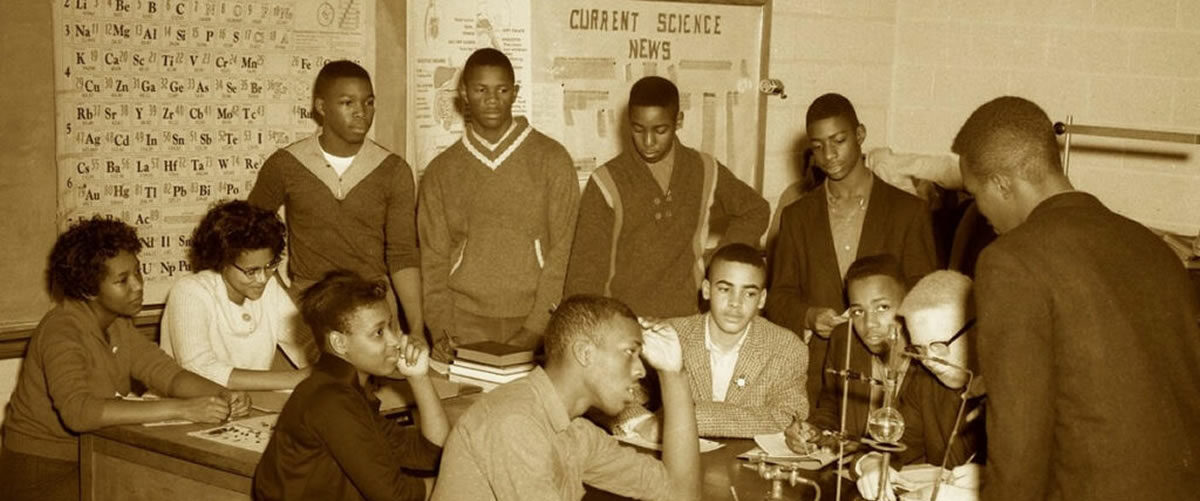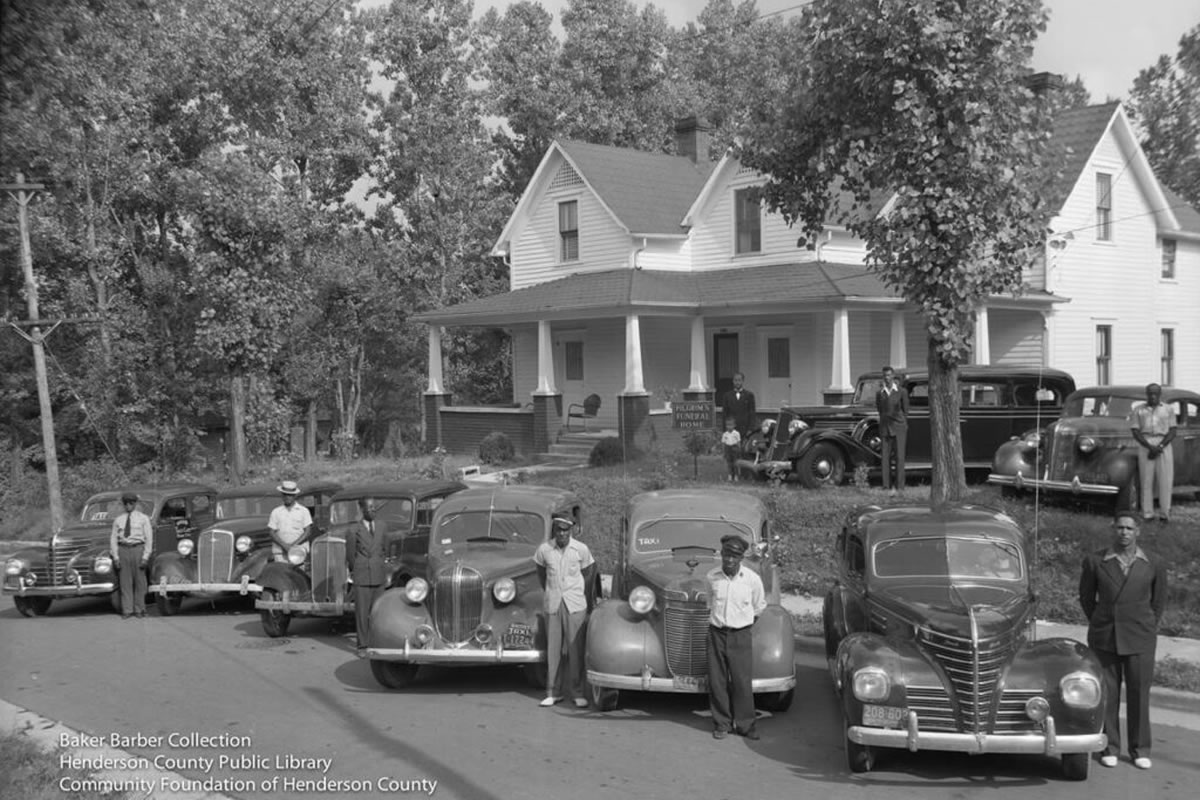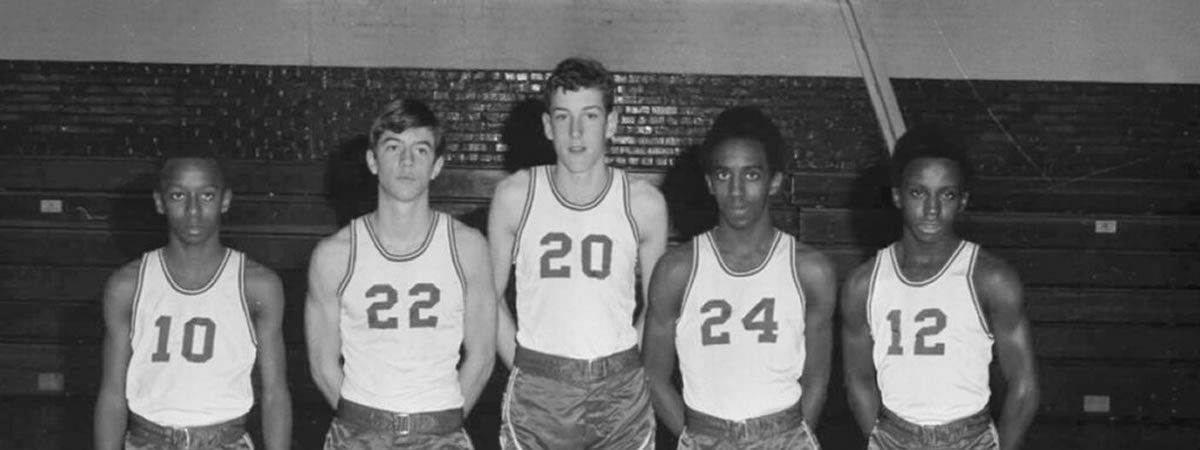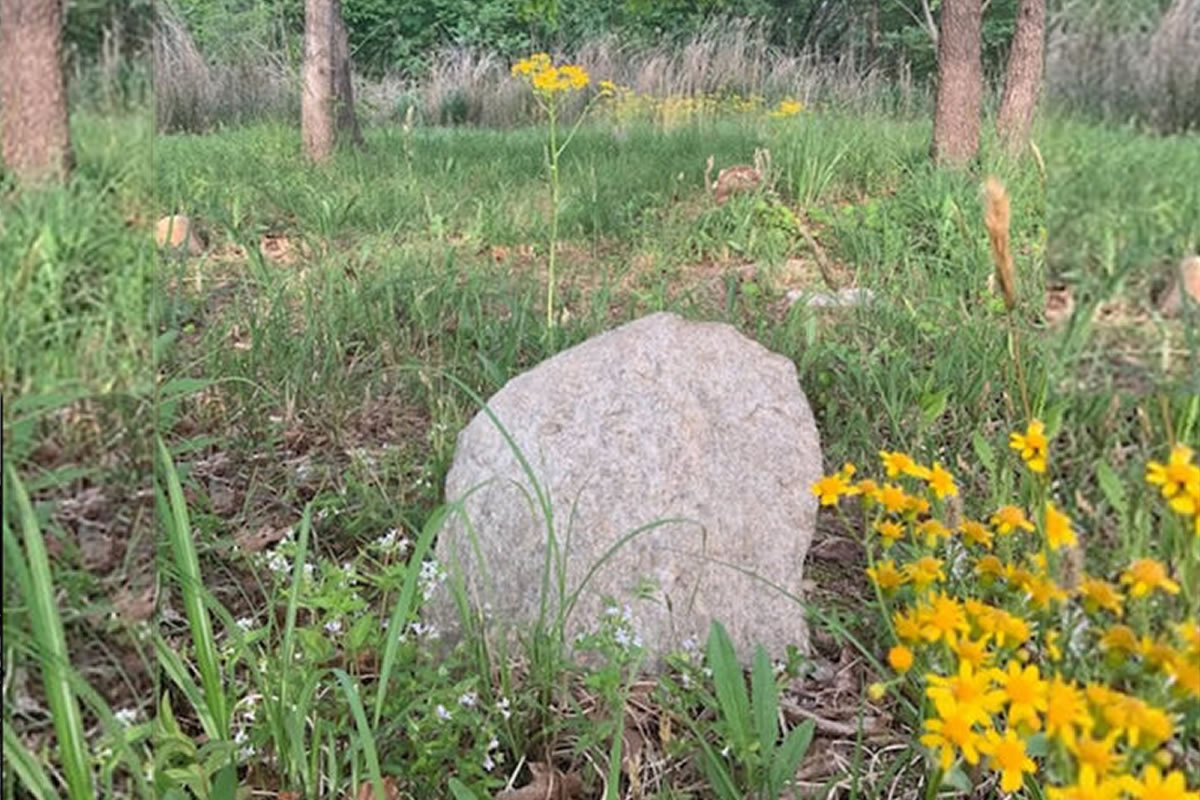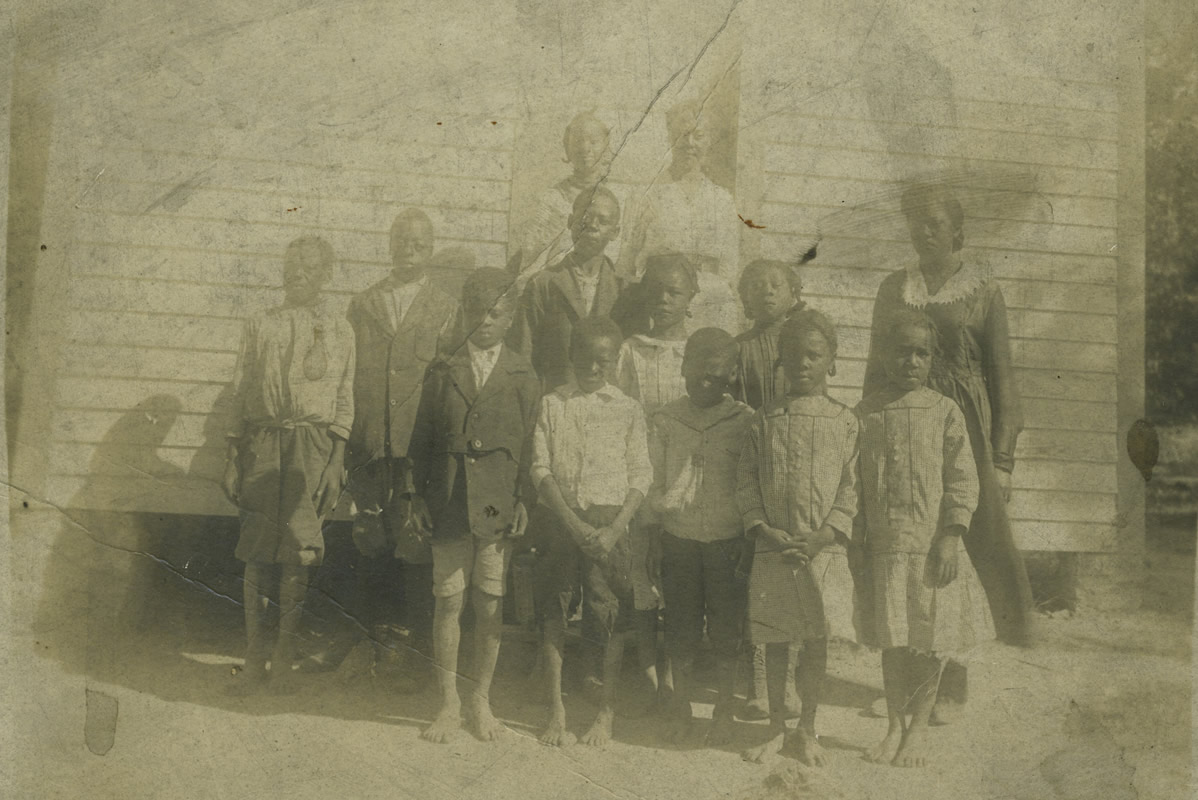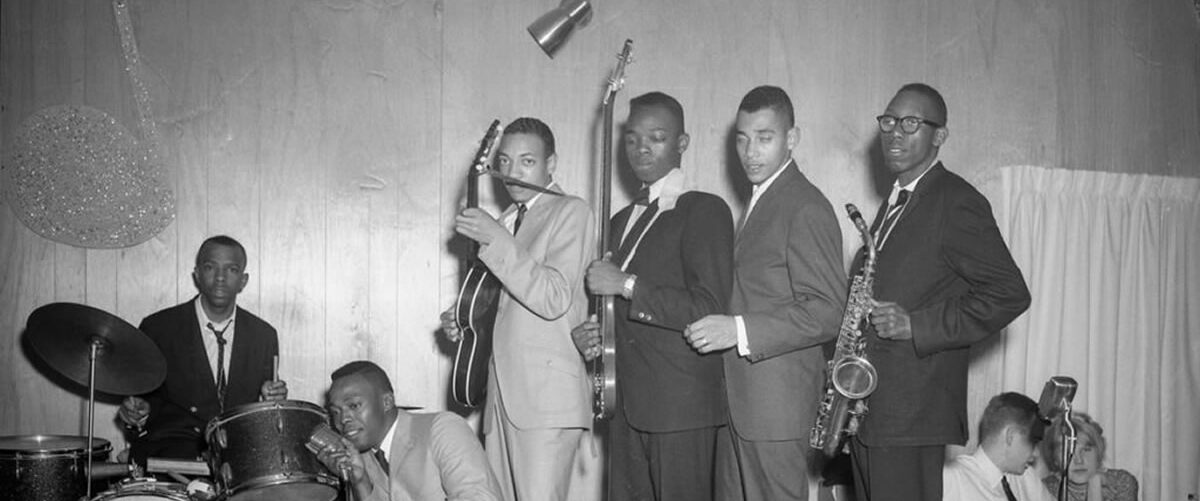The Kingdom of the Happy Land
Throughout the history of Henderson County no other chapter is perhaps so intriguing and yet so veiled in mystery as the efforts of a group of freed slaves to establish a cooperative Kingdom grounded on a philosophy of “one for all, and all for one.” It is a story, not unlike the Biblical story of Moses, of a band of wandering people who left the intolerably harsh conditions of slavery to begin a new life. Their dream was rooted in an ancestral tribal memory and sustained by the hope for a Promised Land. When they finally stopped in Henderson County on the border of North and South Carolina, the land on which they settled came to be known as the Kingdom of the Happy Land.
The story begins at the end of the Civil War when life in the South was in shambles. A dark cloud of growing intolerance hung over the defeated Confederacy. The Emancipation Proclamation had freed Blacks from the oppression of slavery, but former slaves found the chances of succeeding in an environment of disorder and uncontrollable hostility formidable. As a freed but imperiled people, only a grand dream, and the practical reality of safety in numbers, would ensure a chance for survival. No one knows exactly where the dream had its start, in what year or, for that matter, who it was that instilled this dream in the hearts of his followers. But there can be no doubt that it found its expression along the banks of the Green River in southern Henderson County. The most widely accepted point of origin for this original group of possibly 50 former slaves was a plantation in Mississippi. As they began their travels, they were fueled by the inspiration that somewhere there would be for them a place of refuge. William Judson King, whose grandparents joined the Happy Land after its establishment in Henderson County, remembers hearing that “they started out with no idea of a destination, and they went on until they came to a friendly situation, or to where little attention was paid to their presence.” As they traveled, they would share their vision with other former slaves and as they did, their numbers grew. Across Alabama, up through Georgia, on into South Carolina they moved, choosing their havens not by geography, but by the attitude of White people along the way. By the time they had traveled through the Piedmont of South Carolina, their number had swelled to between 150 and 200 people.
It is likely that many recruits were from South Carolina, the cradle of the Confederacy, and a particularly inhospitable place for the newly freed blacks. This is borne out by the fact that when the Kingdom dissolved around 1900, many returned to the Piedmont of South Carolina, to places like Enoree, Union and Newberry to re-establish their original homes. Rev. King said his grandparents “joined the people coming in mostly from South Carolina and Georgia where the vigilantes were strong.”
At this point, the band had been traveling for a long time. How long is uncertain, but as autumn approached — possibly as early as 1865 or as late as 1867 — they were nearing their destination. It is most likely that while the band was in South Carolina they heard about the vast wilderness that lay ahead in the mountains of Western North Carolina. It was known that this area was a thinly populated region of thick woods bisected by the Buncombe Turnpike running from Western Tennessee through to the foothills of South Carolina. In all probability, some of them had traveled this road before, for by this time Flat Rock, North Carolina, was a summer haven for wealthy landowners from the Low-Country of South Carolina. Summer pilgrimages to the mountains were an annual event involving whole families and their slaves. They still had only a dream to lead them on the day that they set out up the Buncombe Turnpike, but their steps must have been quickened with renewed hope.
Arriving at the crest of Winding Stairs Mountain just inside the North Carolina line, they were to meet their destiny at a place called Oakland. Before his death prior to the Civil War, Col. John Davis had established at Oakland a plantation whose parameters were calculated by miles not acres. Mrs. Serepta Merritt Davis, wife of the deceased Col. Davis, showed the group genuine sympathy by offering them land at Oakland on which they could begin to practice their communal dream, most likely in exchange for their labor. This new settlement became known as the Happy Land, their long sought after refuge. According to Rev. King, “There were more settlements like the Kingdom — Beulah Land, Happy Land — names that reflected the feelings of people who had found a haven where they could stay without being molested.” Phillip Jones, who as a boy lived on the adjoining property to the Happy Land, remembers, “They worked for the Davises. They cleared up the Davis place out here. There was a field on the Davis place called the ‘Bob Field’ because Bob Montgomery (the eventual leader of the Happy Land) and his crowd cleared it.” It was, however, always the intention of the Kingdom to own their own land free and clear. This they were able to do some years later, but in those first few years after arriving at Oakland, they set about creating a life based on work, as well as creating the structures for a communal settlement. To this tired band of people, having endured the indecencies of slavery and the travails of a long journey, this must have seemed the Promised Land, indeed.
This was good land, rich in the kind of materials that the Kingdom needed. There was an abundance of timber to build log homes and native granite to erect chimneys. On the nearly 200 acres allotted for their Kingdom, each family was allowed to have their own home and garden plot. There was tillable land to grow crops and room to graze livestock. It is important to remember, however, that the entire endeavor was based on a tradition that went back to their African roots. William Judson King remembered what had been told to him many years before, “It was an attempt to revive the African culture, to build a new tribe, and through it, preserve our race’s inheritance.” Therefore, the Happy Land had a king and queen like the tribes from their African memory.
During the time that the kingdom flourished, there was probably more than one king, but the only king whose name has survived in history was Robert Montgomery. Robert Montgomery was not married so he chose Luella Montgomery, his brother’s wife, to become the kingdom’s first queen. The first recorded fact that bears this out was the deed to the property that lists Robert and Luella as the owners of the land on which the Happy Land existed. The recording of the deed took place in 1882, and for a dollar an acre, 180 acres of the Davis Place officially became the property of the residents of the Happy Land. The homes of the king and queen were only a few yards apart from each other, but the border between the Carolinas divided them, his on the North Carolina side, hers on the South Carolina side. This showed a hard-earned political savvy and a cautious mistrust of the authorities. They decided on this arrangement in the event that if there were trouble from either side, they would just move to the other side where there was no problem. Of the 180 acres, 70 acres were on the South Carolina side and 110 acres were on the North Carolina side. The residences of the king and the queen were the most prominent structures, not because they were more imposing than the others, but rather because their dwellings were the highest on the mountain. On either side of these two log structures and down some, the other members had their homes with a valley shared communally that lay in front of the settlement.
The king was responsible for all the money that came into the Kingdom and dispensed funds as needed. With the philosophy of “All for one and one for all” as the group’s guiding principle, no matter what the skill level of the person coming into the Kingdom, the community itself came first. Into the Kingdom came men skilled in carpentry and ironwork, brick and stone masons, plasterers — men able to make an income in areas other than farming. Many of these men utilized their skills outside the Happy Land and the money they earned was given to the king to be used for the general good of the community. Women, as well, were employed outside the Happy Land and were valued for their weaving and seamstress talents, their nurturing skills and domestic abilities. Zircon was also discovered on their land and they mined a particularly rich vein until a mining accident killed two of their members and the operation was shut down. They grew their own food and the surplus from the fields was sold at markets. Timber was harvested for the railroad, and as Rev. King points out, “at the time it was hard to buy arable land in South Carolina and people came on into the mountains where land was available. But its yield was largely tanbark and cross ties. The railroad companies paid 35 cents for cross ties at the time.” Phillip Jones stated that, “My Daddy ran a rock water mill on Green River right where the lake is now. He ground corn and it was big business for him. Whenever people came to the mill from Happy Land, they brought a wagonload.” The Kingdom seems to have been a self-sustaining enterprise, even marketing a medicinal product they called Happy Land Liniment to help alleviate rheumatism and aching muscles.
The Kingdom of the Happy Land survived until the turn of the century. No one knows for certain the date of its demise, but Rev. King states what he feels to be the reason for the kingdom’s disbanding: “The economic situation finally spoiled it. The people had to go where the work was. Like my grandfather, Perry Williams, who’d always worked with horses, and then cars came in.” The original members of the Happy Land were getting older and times were changing. New recruits were scarce and the necessity that had fueled the early dream had waned. People either died or moved away until finally there was only one person left on the original property of the Happy Land, Jerry Casey. It is said that he moved into the old house which belonged to Robert Montgomery, and lived out his days there until he died in 1918. Ernest Mims, whose great grandparents lived at the Happy Land, says, “From what I can understand, when the Kingdom of the Happy Land dissolved, they all just left the property. I don’t know who had the deeds to it or anything of that nature, but they just spread it all over. That’s what Uncle Bill told me.”
Perhaps the longest lasting legacy of the Happy Land on the history of Henderson County was to be made after it no longer existed. Some of the members of the Happy Land moved into the Hendersonville area bringing their skills, talents, and work ethic into the stream of community life. There were individuals like John Markley who was a blacksmith, veterinarian, wheelwright, and an artisan of malleable metal. Markley, who moved to the East Flat Rock area, made many buggies and wagons for the people of Henderson County. If you needed your horse shod, it was most likely John Markley who did the job. He understood animals and could suggest remedies that would help an ailing creature. He created pots, pans and silverware out of metal. He was a storyteller with a gift for spellbinding his audience, often using stories to teach his younger audiences about the necessity of honesty. Sallie Markley, John’s wife, would relate stories about the Happy Land to the children of the area, thus becoming the unofficial historian for the group. Unfortunately for the reconstruction of history, her accounts were never written down. There were Perry and Amy Williams, who opened a thriving business providing meals and lodging to people ‘wagoning’ down the Buncombe Turnpike, and Sarah Williams, Perry’s mother, who bought land on Little River Road and lived out her life there. “She was 110 when she died,” Rev. King said of his great grandmother, “but she was still active when I was a good size boy.” There were many others, and it must be inferred by the lack of actual documented or oral history, that when the people of the Happy Land moved into the Hendersonville area, they didn’t expound on their roots at the Happy Land. Another reason, perhaps, that nothing remains of an actual documented history of the Happy Land was no matter how unique the experiment was, it was deemed of little importance in the general scheme of the predominant White culture. The true history of the Happy Land lives on, however, through the lives of its descendants, and though the mists of time have obscured from history the whole story, the dream that brought the people of the Happy Land to Henderson County still exists. Local Henderson County historian, Frank Fitzsimmons, says in answer to the question of why this wandering band of freed slaves endured so much to finally settle in Henderson County, “They were seeking that which mankind has sought since the beginning of time: peace, happiness and a place to live their lives as they desired.”
From A Brief History of the Black Presence in Henderson County by Gary Franklin Green

